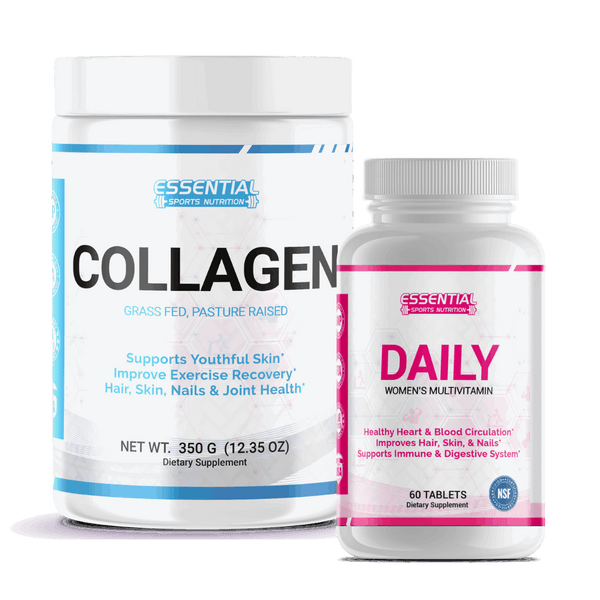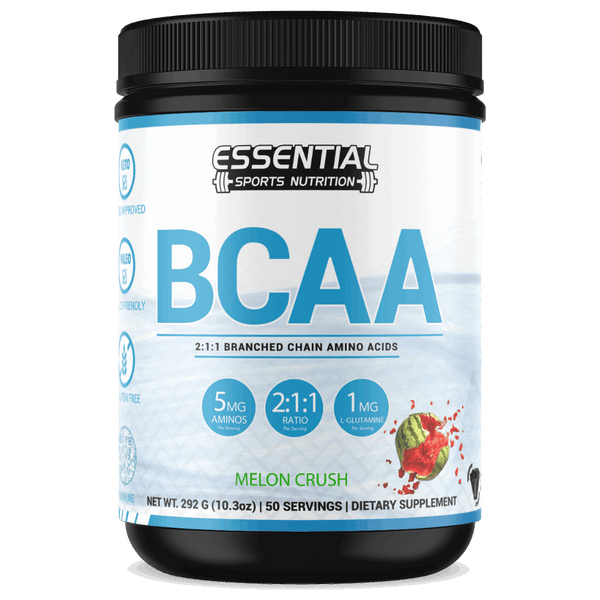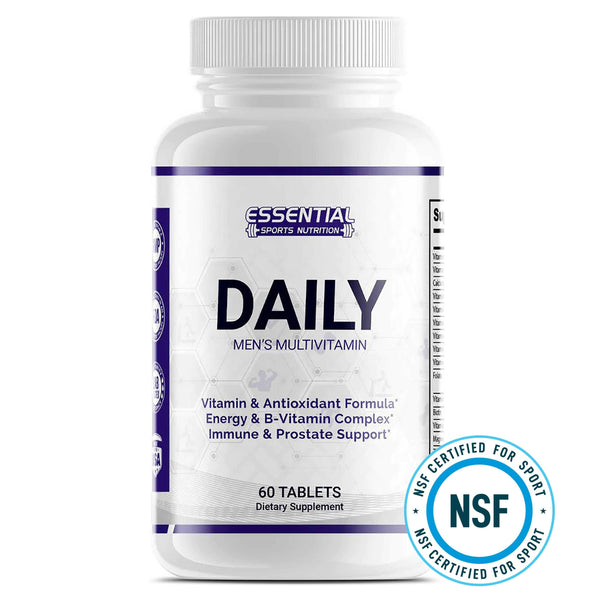From Plate to Power: How Digestion Determines the Fate of Your Vitamins
Your digestive system plays a vital role in determining how well your body can use the vitamins you consume. Enzymes, such as pancreatic lipase, break down nutrients like vitamin A for best absorption. Once in the small intestine, specific proteins help stabilize and transport these vitamins into your bloodstream via structures like chylomicrons. Meanwhile, dietary fats enhance the absorption of fat-soluble vitamins by forming micelles that ease their transport across the intestinal barrier. Stomach acidity is also essential, activating enzymes that release and break down vitamins. Understanding these processes might lead you to improve your nutrient intake further.

Key Takeaways
Digestive enzymes break down vitamins, enhancing their absorption and bioavailability.
Pancreatic lipase and phospholipase B are crucial for converting vitamin A for absorption.
Cellular retinol-binding protein type 2 and lecithin:retinol acyltransferase facilitate stable vitamin A transport and re-esterification in enterocytes.
Chylomicrons transport fat-soluble vitamins like vitamin A through the lymphatic system to tissues.
Stomach acidity activates enzymes that release vitamins from food, improving their bioavailability.
Digestive Enzymes and Vitamins
Digestive enzymes play a pivotal role in the breakdown and absorption of vitamins, such as how pancreatic lipase and phospholipase B specifically hydrolyze retinyl esters to enhance the bioavailability of vitamin A. These enzymes target the ester bonds in retinyl esters, converting them into free retinol, a form more readily absorbed by the intestinal cells. It's vital for your body to effectively harness vitamin A, known for its importance in vision, immune function, and cellular communication.
Once the retinyl esters are hydrolyzed, the free retinol is bound to cellular retinol-binding protein type 2. This binding is essential as it stabilizes the retinol, allowing it to be transported within the enterocyte without degradation. Following this, the enzyme lecithin: retinol acyltransferase re-esterifies the retinol to retinyl esters, preparing it for incorporation into chylomicrons. These chylomicrons are lipid-protein particles that transport dietary lipids from the intestines to other body parts through the lymphatic system.
This entire process underscores the critical synergy between digestive enzymes and the efficient absorption of vitamin A. By understanding this; you're better informed about how your body utilizes essential nutrients, optimizing your dietary choices and overall health management.
Role of Stomach Acidity

You've seen how digestive enzymes work, but let's focus on how the acidity of your stomach influences vitamin absorption. The efficiency of enzymatic breakdown of nutrients, such as proteins, depends on your stomach acid's pH levels. Alterations in these acid levels can greatly impact the absorption and bioavailability of essential vitamins and minerals.
Stomach Acid Levels
Stomach acid levels are essential for the effective digestion and absorption of vitamins, ensuring nutrients are adequately broken down and made available for your body's use. Adequate stomach acidity, primarily through gastric fluid, is vital for nutrient breakdown and maximizing vitamin bioavailability. Without sufficient stomach acidity, the release of essential vitamins from food particles can be greatly hindered.
| Factor | Impact on Vitamin Absorption |
|---|---|
| Vital | Enhances release and absorption of vitamins |
| Ideal | Reduces vitamin availability |
| Gastric Fluid | Activates enzymes crucial for breakdown |
| Nutrient Breakdown | Facilitates effective nutrient use |
| Vitamin Bioavailability | Dependent on effective stomach acidity |
Understanding and maintaining ideal levels of stomach acidity is pivotal for health.
Enzymatic Breakdown Efficiency
How does stomach acidity impact the efficiency of enzymatic breakdown during digestion? You might not realize it, but the acidity level in your stomach plays a vital role in how effectively your body processes and absorbs nutrients. Here's how:
Activates Pepsin: Low pH converts pepsinogen to pepsin, essential for protein digestion.
Denatures Proteins: Acidic conditions help unfold proteins, making them easier to break down.
Food Particle Breakdown: Acidity aids in disintegrating food into smaller, more manageable pieces.
Enzyme Efficiency: Necessary pH levels are required for maximal enzyme activity during digestion.
Impact of External Factors: Stress and medications can alter stomach acidity, affecting digestion and nutrient absorption efficiency.
Understanding these elements helps you appreciate the complex interplay between stomach acidity and the enzymatic breakdown during digestion.
Ph Impact on Absorption
Understanding the role of stomach acidity in enzymatic breakdown leads us directly to its impact on the absorption of nutrients. The pH level of your stomach is important for dissolving food and releasing essential nutrients. A lower stomach pH enhances the activation of digestive enzymes, optimizing nutrient absorption. This acidic environment is essential as it aids in the solubilization and bioavailability of various vitamins and minerals during digestion. However, alterations in stomach pH can greatly affect how well these nutrients are absorbed. Hence, maintaining a balanced pH in your stomach is crucial for promoting efficient nutrient uptake. It's a delicate balance that impacts your overall health by influencing the bioavailability of nutrients critical for bodily functions.
Small Intestine Absorption

In the small intestine, specific transport mechanisms are essential for absorbing oil-soluble vitamins such as vitamin A. Here, you'll find that the efficiency of intestinal absorption plays a pivotal role in how well vitamins like retinol are utilized by your body. Enzymes like lecithin: retinol acyltransferase are instrumental in the reesterification of retinol, ensuring that it's ready for absorption.
Once retinol is absorbed, it's incorporated into chylomicrons containing other fats and lipids. These chylomicrons are critical as they transport retinol through the lymphatic system, bypassing the liver initially, which allows for direct utilization and storage in various tissues. The small intestine's role is crucial here; without its specialized functions, the bioavailability of these essential nutrients could be substantially compromised.
To give you a clearer picture of how this process works, consider these key points:
Enzymes like lecithin: retinol acyltransferase facilitates the conversion of retinol for easier absorption.
Retinyl esters transform within the small intestine to become more absorbable.
Chylomicrons play an essential role in transporting retinol.
The lymphatic system is the initial route for these chylomicrons, ensuring wider distribution.
Efficiency in this process is key to ensuring that your body gets the vitamins it needs.
Impact of Dietary Fats

You'll find that dietary fats are not just a source of energy; they're essential for the effective absorption of fat-soluble vitamins, including vitamins A, D, E, and K. When you consume fats, they help form micelles, which are critical for transporting these vitamins across the intestinal barrier. In addition, fats aid in incorporating these vitamins into chylomicrons, enhancing their transport through the lymphatic system, thereby boosting their bioavailability and utilization in your body.
Enhancing Vitamin Absorption
Dietary fats play a pivotal role in enhancing the absorption of fat-soluble vitamins such as A, D, E, and K, ensuring your body effectively utilizes these essential nutrients. When you consume fats, they assist in the formation of micelles, small transport carriers that help increase the solubility and absorption of these vitamins. This process is critical during food digestion, impacting the overall bioavailability of nutrients.
Formation of Micelles: Fats help create these structures that enhance vitamin solubility.
Release of Bile Acids: Dietary fats stimulate bile production, which is essential for vitamin absorption.
Improved Bioavailability: Fats increase the body's ability to utilize vitamins.
Sources of Healthy Fats: Incorporating foods like olive oil or nuts can aid absorption.
Optimized Utilization: Combining vitamin-rich foods with fats enhances nutrient uptake.
Fats in Nutrient Transport
Understanding the role of dietary fats is essential for optimizing the transport and absorption of fat-soluble vitamins like A, D, E, and K within your body. Dietary fats are important in forming micelles in your small intestine, enhancing vitamin absorption. These micelles facilitate the transportation of fat-soluble vitamins, ensuring they are readily absorbed. Additionally, the presence of dietary fats is essential for incorporating these vitamins into chylomicrons, which are then transported via the lymphatic system. It's also noteworthy to note that the type of fat you consume matters; unsaturated fats, in particular, are more beneficial for the bioavailability of these vitamins. Ensuring a balanced diet with adequate healthy fats can greatly improve the utilization of these essential nutrients.
Vitamin Interactions Explained

Vitamin interactions play a pivotal role in determining the bioavailability of nutrients, as some enhance while others inhibit absorption processes in your body. Understanding these interactions is crucial for optimizing your nutritional intake and overall health.
Vitamin C and Iron: Vitamin C significantly enhances the absorption of iron, a critical mineral for blood health. Including vitamin C sources, like citrus fruits or bell peppers, with iron-rich meals can maximize iron uptake.
Fat-Soluble Vitamins (A, D, E, K): These vitamins require dietary fats for proper absorption. To ensure effective uptake, it's vital to include healthy fats from sources such as avocados, nuts, or oils when consuming these nutrients.
Zinc and Copper: High doses of zinc can inhibit the absorption of copper due to their competitive interaction. Balancing intake of these minerals is key to preventing deficiencies.
Vitamin D and Calcium: Vitamin D is crucial for calcium absorption, vital for bone health. Ensuring adequate vitamin D levels can help maximize calcium absorption.
Antagonistic Relationships: Some nutrients, such as calcium and iron, can inhibit the absorption of others when consumed together excessively. Being mindful of these interactions is important in meal planning.
Influence of Gut Health

Your gut health greatly impacts how well your body absorbs and utilizes vitamins. The intestinal tract, with its complex gut microbiota, plays a pivotal role in the bioavailability of nutrients. A well-balanced gut microbiota facilitates the efficient breakdown and assimilation of vitamins, which are important for various bodily functions. However, when there's an imbalance in these gut bacteria, possibly due to poor diet or antibiotic use, the absorption of vitamins can suffer greatly.
Digestive disorders such as leaky gut syndrome further complicate this scenario. In this condition, the intestinal barrier becomes permeable, allowing substances that should normally be contained within the gut to leak into the bloodstream. This leakage can trigger inflammation and immune responses that disrupt the gut microbiota and impair nutrient absorption. Consequently, even if you're consuming a vitamin-rich diet, your body might not reap the full benefits due to compromised gut health.
Maintaining a healthy gut is, hence, essential for effective vitamin bioavailability. Nutritional choices that include probiotics and a diet rich in diverse, whole foods support a robust gut microbiota, fostering an environment where vitamins can be efficiently absorbed and utilized, keeping you healthier in the long run.
Enhancing the Bioavailability of Vitamins

While maintaining a healthy gut is essential for nutrient absorption, it's also important to contemplate how food preparation and additives enhance vitamin bioavailability. To optimize vitamin bioavailability through your diet, understanding the role of emulsifiers, stabilizers, and thoughtfully designed food matrices is key. These elements greatly impact how vitamins are digested and absorbed in your body.
Here are several strategies that can help enhance the bioavailability of vitamins:
Utilize Emulsifiers: Adding emulsifiers can improve the bioavailability of oil-soluble vitamins by facilitating their integration into micelles, aiding in more effective absorption during digestion.
Design Food Matrices Thoughtfully: Structured food matrices can protect vitamins during digestion and promote their release at ideal sites within the gastrointestinal tract.
Optimize Oil Droplet Size: Smaller oil droplets in emulsions increase the surface area for enzymatic action, enhancing the dissolution and absorption of fat-soluble vitamins.
Control Droplet Aggregation: Preventing excessive aggregation of oil droplets ensures more uniform distribution and accessibility of vitamins.
Stabilize Fortified Products: Incorporating vitamins into stable food matrices ensures they remain effective and highly bioavailable after processing and storage.
Emphasizing these aspects during food preparation can significantly improve the effectiveness of vitamin intake through your diet.
Transport Proteins Function

Transport proteins in your intestinal lining are essential. They facilitate the uptake of vitamins and minerals, ensuring their efficient transport into the bloodstream. These specialized proteins are integral to the process of nutrient absorption across the intestinal membrane. Each type of vitamin and mineral has specific transport proteins responsible for its movement into your body's system. Without these proteins, even if you consume adequate nutrients, your body might not absorb them effectively.
The function of these transport proteins directly influences the bioavailability of nutrients, which measures how readily your body can use the vitamins and minerals you ingest. For instance, certain proteins in your intestinal lining selectively bind to iron and facilitate its transfer across the membrane, impacting how much iron is available to your body.
If these transport proteins are deficient or abnormal, it can lead to significant health issues due to the poor absorption of essential nutrients. This is why understanding the role and efficiency of transport proteins is vital for evaluating nutrient bioavailability. Ensuring these proteins function properly can enhance your overall nutrient intake and optimize your health.
Effects of Cooking Methods and Nutrient Bioavailability

Understanding how transport proteins facilitate nutrient uptake highlights the importance of considering how cooking methods can impact the bioavailability of these nutrients. When you cook, it's crucial to choose methods that preserve the nutritional value of food, especially the vitamins that are susceptible to loss during cooking.
Here are several key points to bear in mind:
Boiling: This method can greatly reduce the bioavailability of water-soluble vitamins, such as B vitamins and vitamin C, as they leach into the cooking water.
Steaming: Compared to boiling, steaming helps maintain higher levels of water-soluble vitamins. It's a gentler method that minimizes the risk of vitamin loss.
Microwaving: Efficient and quick, microwaving can preserve the bioavailability of vitamins better than many conventional cooking methods, particularly for water-soluble vitamins.
Heat Sensitivity: Vitamins like vitamin C and folate are heat-sensitive and can degrade easily when exposed to high temperatures.
Stability of Fat-Soluble Vitamins: Unlike water-soluble vitamins, fat-soluble vitamins such as retinol (Vitamin A) are more stable and less likely to degrade during cooking.
Conclusion

So, after diving deep into the world of digestion and vitamin absorption, you've probably realized it's not just about popping supplements with a gulp of water. Nope, it's an intricate dance involving your stomach acid doing the tango with enzymes, and fats playing matchmaker for vitamins. Cooking methods? They can be your vitamins' best friend or worst enemy. Remember, your gut's health is the VIP in this nutrient nightclub. Treat it right, and you'll be dancing to a healthier tune!
FAQs
Q: What is the role of digestion in vitamin bioavailability?
A: Digestion plays a crucial role in breaking down food components and releasing nutrients like vitamins, which are then absorbed by the body.
Q: How does food composition affect the bioavailability of vitamins?
A: The types of food components present in a meal can impact how well the body absorbs and utilizes vitamins.
Q: What are some examples of food sources rich in vitamin E?
A: Foods like nuts, seeds, and vegetable oils are excellent sources of vitamin E.
Q: How does food processing affect the bioavailability of vitamins?
A: Food processing methods can sometimes degrade or enhance the bioavailability of vitamins in the final product.
Q: Why is the bioavailability of folate important for human health?
A: Folate plays a crucial role in DNA synthesis and repair, making its bioavailability essential for various bodily functions and overall health.
Q: What is the relationship between vitamin B12 and the bioavailability of dietary sources?
A: Vitamin B12 is primarily found in animal products and has higher bioavailability than plant-based sources.
Q: How do in vitro digestion studies contribute to understanding vitamin bioavailability?
A: In vitro digestion studies simulate the process of digestion outside the body and help researchers assess how well vitamins are released from food matrices.
Q: How Does the Digestive System Absorb Vitamins?
A: Your digestive system breaks down food with enzymes, allowing vitamins to be absorbed into your bloodstream through transport proteins in your intestinal lining. Factors like diet and health impact this absorption process.
Q: What Factors Influence the Bioavailability of Vitamins?
A: Factors like food composition, emulsifier presence, and micelle size greatly influence vitamin bioavailability. Optimizing these can enhance how effectively your body absorbs these essential nutrients, promoting better overall health.
Q: What Is Bioavailability in Digestion and Absorption?
A: Bioavailability in digestion is how much of a nutrient you can absorb and use. It's essential for your health, affecting how well vitamins and minerals nourish your body after they're ingested.
Q: Does Vitamin A Require Digestion Before Absorption?
A: You must digest Vitamin A before your body can absorb it. Enzymes break down retinyl esters into retinol, which is then transported and utilized throughout your body, ensuring effective absorption.




























